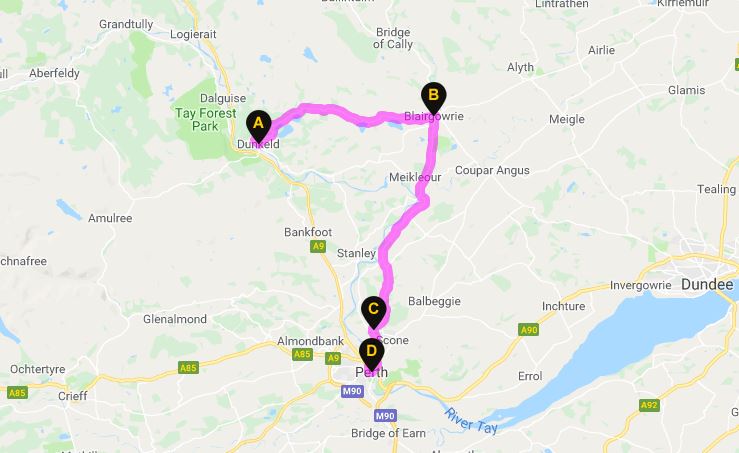Motorists have been warned to expect major disruption with a planned shutdown of one of Scotland’s busiest roads.
Transport Scotland has announced a series of overnight closures on the A9 in Perthshire, as part of preparations for its £3 billion dualling project.
The work will also involve more than two years of speed restrictions.
Traffic will be redirected about 48 miles and 30 miles through rural communities on either side of the road, prompting calls for extra safety measures and more gritting.
Health bosses have also been urged to provide extra staff and support in Highland Perthshire, although roads chiefs have assured that emergency vehicles will be able to get through the roadblocks.
A six-mile stretch of the Luncarty to Birnam section will be closed for four nights, between 8.30pm to 6am, from Friday, February 22.
Northbound traffic will be redirected along the A85, while those heading south should follow the A923.
Ahead of the closures, work will be carried out to install narrow lanes and temporary safety cameras.
A 40mph limit will remain in place until the project is completed in spring 2021.
Project manager Gemma Montrose said: “These traffic restrictions are a tried and tested approach that improve safety for road users and construction workers during what will be an extremely busy construction period.”
She said drivers should expect the 40mph limit to add about four minutes to journey times. “We will be working closely with contractor Balfour Beatty to ensure disruption to road users and the local community is monitored throughout the works and kept to a minimum.”
The planned diversion will take northbound traffic as far as Blairgowrie in east Perthshire. Local SNP councillor Tom McEwan said: “The upgrade of the A9 is an important infrastructure improvement which will benefit our Perthshire communities enormously.
“The planned overnight closure of the road will cause a fair amount of issues around the diversion routes. I have already asked officers of Perth and Kinross Council to confirm that winter road treatments will be upgraded to 24-hour cover from the current daylight hours provision as the risk of heavy snow and ice is very high.”
He added: “I have concerns for rural residents living along the diversion routes as overnight movement of large vehicles will increase noise and present road safety issues as drivers unfamiliar with these rural roads attempt to negotiate some serious bends in the dark of winter.
“I hope drivers stick to the assigned diversion routes as the alternative routes are inappropriate for the regular A9 traffic and as best they can plan their A9 journey to use this stretch of road when it is open as normal during the day. Police patrols of the diversions are essential to ensure public and driver safety and ensure any issues are quickly attended to.”
Councillor Grant Laing has also called for increased gritting on the diversion routes. “These roads need to be treated as much as the A9 would be,” he said.
Conservative councillor Caroline Shiers said she was seeking assurances that appropriate diversion signs would be installed along rural roads.
Councillor Bob Brawn added: “These closures will involve detours through villages and along roads with few passing places.
“As they are for a short period and overnight, disruption should be to a minimum and at this time of year traffic volumes will be low. However, I would hope motorists would drive with care along these detours, respecting villages and residents, and not treating them as rat-runs.”
Highland councillor Mike Williamson said he had asked NHS Tayside to consider supporting patients in the highland Perthshire area with extra staff during the closures.














